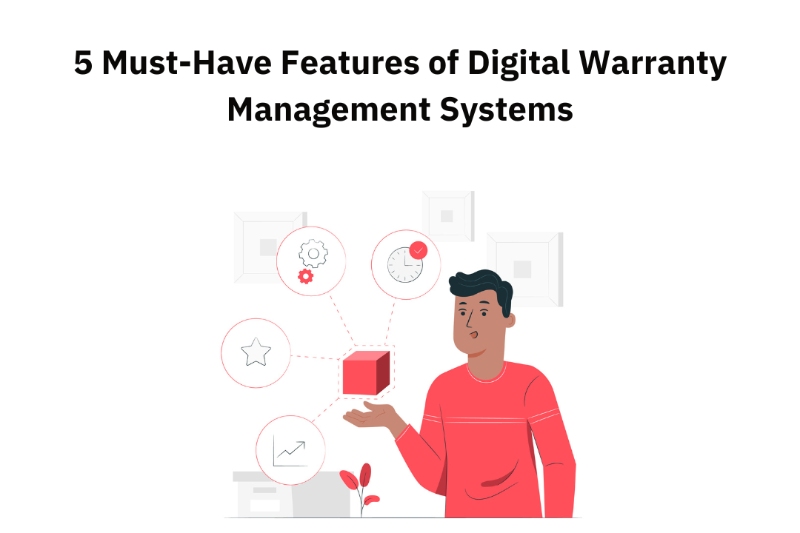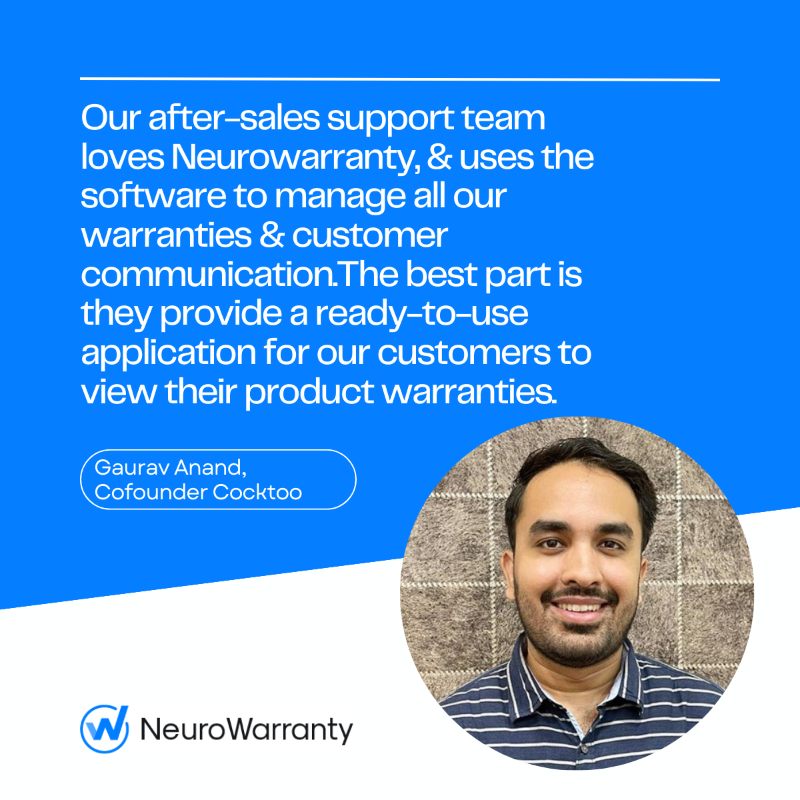
Digital Warranty Management Systems have revolutionized the way businesses manage warranties for their products. With the advent of technology, brands no longer have to rely on manual processes to manage warranties.
Instead, they can use digital solutions like NeuroWarranty to automate and streamline their warranty management processes. But choosing the right digital warranty management system can be challenging, with so many options available in the market.
In this blog post, we'll explore the five must-have features of digital warranty management systems that can help businesses make informed decisions.
Contents
QR Code-based Warranty Registration
QR code-based registration is a must-have feature in digital warranty management systems. It allows businesses to provide a unique QR code for each product, simplifying the registration process for customers.
With QR codes, customers don't have to fill out lengthy registration forms, and there's less chance of errors. Moreover, the QR code should not just lead to a web page, but to a custom-built web app like NeuroWarranty. This allows businesses to collect relevant product information easily and efficiently.
NeuroWarranty's QR code-based registration system is a perfect example of how this feature works. When a customer purchases a product, they receive a unique QR code with their purchase.
The customer can scan the QR code using their mobile device, and it takes them to a custom-built web app where they can register their product by simply providing a few details.
This feature saves time for customers and businesses, reduces errors, and allows businesses to collect product information easily.
Automated Warranty Claims Processing
Automated claims processing is another must-have feature in digital warranty management systems. It allows businesses to process warranty claims quickly and efficiently, reducing cross-communications and phone calls.
With automated claims processing, customers can also track the status of their claims in real time. This feature can save businesses a lot of money and time.
NeuroWarranty's automated claims processing system is an excellent example of how this feature works. When a customer files a warranty claim, the system automatically verifies the claim, and if approved, directs your customer service teams to carry out the claim on simple dashboards.
The system also sends real-time updates to customers about the status of their claims. This feature helps businesses process claims quickly and efficiently, saves costs, and improves customer satisfaction.
First-Party Customer Data Collection
Collecting first-party customer data is a must-have feature in digital warranty management systems. It allows businesses to gain insights into their customers' behavior, preferences, and needs.
This data can help businesses resell and upsell to existing customers, leading to increased LTV.
NeuroWarranty's first-party customer data collection system is an excellent example of how this feature works. The system collects data about customer behavior, preferences, and needs, which businesses can use to personalize their marketing efforts.
NeuroWarranty also empowers brands by bringing them data such as emails, phone numbers and names of their end customers allowing your marketing teams to personalize your remarketing efforts increasing repeat sales and maximum customer retention rates.
Inbuilt CRM
Customers, when registered for a warranty claim, want constant updates on their claim status, but ensuring that customers are aware of their warranty claim's status is an expensive and time-consuming process for brands.
Absence of a direct communication channel between customers who claim a warranty and customer service teams forces brands to take up the process on-call resulting in additional service costs and reduced profits.
At the same time, collecting feedback and reviews from your end customers can prove to be a rather complicated task, notably for consumer product brands.
Using Customer Relationship Management (CRM) software, your end customers can connect directly with your client servicing teams to communicate and register their feedback.
NeuroWarranty's inbuilt CRM is an excellent example of how this feature works. The system provides businesses with a complete view of customer interactions, enabling them to resolve queries quickly and efficiently. The system also allows businesses to track customer complaints, follow-ups, and feedback, improving customer satisfaction.
Easy Implementation and Integration
Easy implementation and integration are must-have features in digital warranty management systems. The system should be easy to implement, without making changes to the production line. Moreover, the system should be easy to integrate with existing software and systems, saving time and money.
NeuroWarranty's easy implementation and integration features make it a great example of how this feature works. The system can be easily integrated with existing software and systems, and businesses don't have to make any changes to their production line. This makes it easy for businesses to adopt the system, without disrupting their existing operations.
Overall, these five features are essential in any digital warranty management system. By choosing a system that has these features, businesses can streamline their warranty management processes, improve customer satisfaction, and save time and money.

Trusted by 100s of leading brands including - Syska, JCB, ResQtech, NeuroWarranty is a QR Code-based warranty management software that is easy to implement yet extremely powerful. Customers can register for a warranty by simply scanning a QR code placed on your product and entering the purchase details.
You can sign up for the warranty management app by scheduling a demo and getting a free 14-day trial here - get a demo when you schedule a demo, an account manager will contact you and organize a call to discuss your business requirements.


